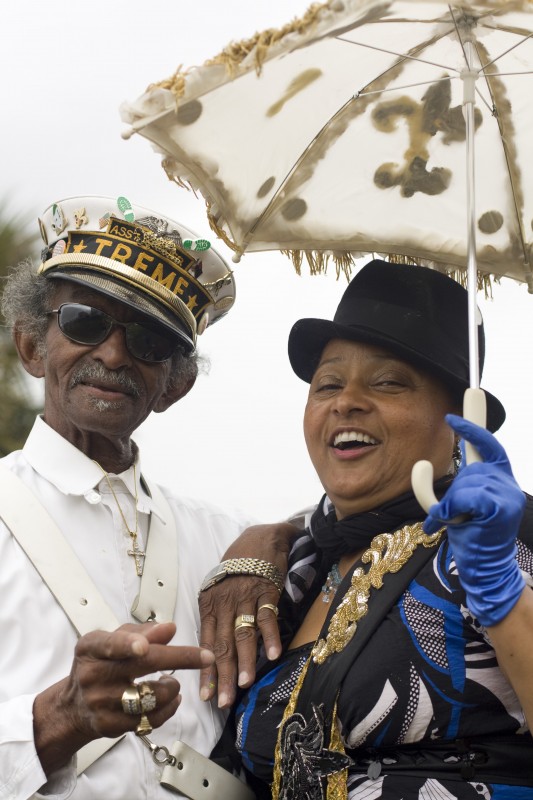Now that Uncle Lionel is in the ground I feel like I can finally talk about an issue that disturbed me greatly during the roughly two weeks of celebrations, some planned and some spontaneous, of his remarkable life. Blog, twitter and facebook wars raged about the propriety of the celebrations, with complaints ranging from the exploitation of Mr. Batiste’s name and likeness to the controversy over postings of photos of his embalmed body in a standing position at the wake. In an absurd landscape worthy of Sartre the internet went viral over the subject of the internet going viral about Uncle Lionel. I unfortunately got caught up in it myself, which felt like a disservice to him. I stopped talking about it online but now I feel I can say my piece.
First of all, aside from the wishes of the immediate family which should always be considered and which I think were ultimately served in this case, I have to say that anyone who objects to anyone else taking a picture of Uncle Lionel or taking a picture of other people with or around Uncle Lionel is a little late to the game because nobody I’ve ever known enjoyed his picture being taken more than Uncle Lionel.
Some took the second lines celebrating his death as an opportunity to question the validity of second lines in general. Certainly the solemn decorum of the funeral procession that preceeds the second line has changed somewhat over the years, although there’s a clear difference between a second line to celebrate someone’s memory and the actual funeral procession, in which traditional decorum is still observed. Inevitably, the question of who does and does not belong in second lines becomes tied up with the tricky question of identity in New Orleans.
I think the hard proof of this fact can be determined by comparing the reaction to Coco Robicheaux’s death with Uncle Lionel’s. Both were fixtures on Frenchmen Street who were loved by many locals yet especially by the tourists who they always had time for. Coco didn’t inspire the large number of impromptu second lines that took place for Uncle Lionel, but Coco’s roots in the community didn’t go as deep as the man whose family has been at the center of funeral parades and second lines for generations. Coco’s official second line was a wild event that basically took over the French Quarter on the afternoon it was held. There was plenty of home video being made on hand held devices and absolutely no question that many of the people marching that day were there for the party and not necessarily because they knew Coco. Everybody had a good time and that was enough. Still, it was a party; however there was no controversy about that event.
The Uncle Lionel second line through Treme and down North Rampart Street on Friday July 13 was every bit as joyous. People smiled and hugged each other. Brass bands played and everyone danced. I saw many friends, hugged and greeted them. But people I didn’t know also willingly shared the moment with me, shaking hands, fist bumping and generally agreeing on how good it was to see it happening. Then, after it was over, criticism arose, filling up the landscape with the stealthy inevitability of a failed levee system. The root of the criticism seemed to be that certain people at the event didn’t belong there. It’s an easily defensible position because it immediately dovetails with the important and very real discussion of gentrification in New Orleans. In some instances the conversation was fueled by people’s grief over the hard fact that Uncle Lionel will no longer be around to brighten our lives. I also think the fact that Uncle Lionel passed within a year of Coco’s departure compounded the sense that a glorious era of New Orleans history when Frenchmen Street became the place to be had ended. There’s no arguing that that Frenchmen Street will never be the same. More importantly, Uncle Lionel was one of the last links to the early days of New Orleans jazz. Though he was a generation younger than the music’s founders, he knew and played with many of them. It’s no wonder there was an undercurrent of inconsolable loss just beneath the surface of the celebration.





